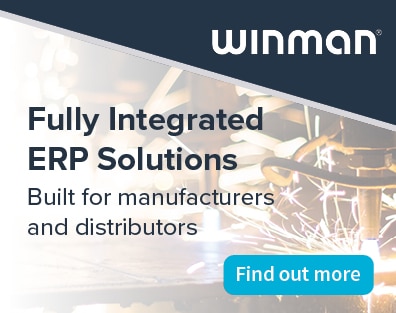We’ve already discussed some of the key emerging ERP implementations to look for in 2025. But what are essential features for ERP systems that we can expect to seamlessly implement right now?
Real-Time Data Analysis
New-generation ERP systems offer real-time data analysis capabilities, allowing businesses to access up-to-the-minute insights on their operations. This means dynamic dashboards for users to generate detailed reports instantly, for quicker and more informed decision-making. Real-time data analysis helps to respond to trends and changes in demand immediately, optimising everything from inventory levels to production schedules. This capability also reduces the time spent on manual data processing and provides a more accurate picture of the business at any given moment.
Embedded Analytics
Embedded analytics is now a core feature of many ERP systems, allowing businesses to gain powerful data insights directly within the ERP interface. This enables users to create, customise, and share reports without needing external analytical tools. Embedded analytics supports various data visualisation options, including charts, graphs, and interactive dashboards, making it easier to interpret complex data. With analytics integrated into the ERP, users can monitor key performance indicators (KPIs) and track metrics such as sales trends, operational efficiency, and financial performance.
Marketing Tools
Some ERP systems are equipped with built-in marketing tools, such as basic email marketing functionalities for campaign tracking. These tools allow businesses to manage marketing campaigns, track their effectiveness, and analyse customer engagement. For example, users can segment customer lists, design targeted email campaigns, and monitor open and click-through rates directly within the ERP. Integrating marketing tools within ERP systems enhances customer relationship management by providing valuable insights into customer behaviour, helping businesses tailor their marketing strategies for better results.
System Integration
Today’s cloud-based ERP systems are built with integration in mind, enabling seamless data flow across various departments and functions. Some ERPs can integrate data from multiple sources, such as HR, finance, supply chain, and customer service, while ensuring strict security and access controls. This integrated approach provides a comprehensive view of the organisation, promoting cross-departmental collaboration and improving operational efficiency. With system integration, data only needs to be entered once and is automatically available across the ERP, reducing data redundancy and minimising errors.
Enhanced Automation
Automation is a growing, popular feature in ERP systems, helping companies streamline repetitive tasks and reduce human error. Through automation, tasks such as invoice processing, order tracking, payroll calculations, and inventory management can be handled with minimal manual intervention. Advanced ERP systems can automate workflows based on predefined rules, which increases efficiency and frees up employees to focus on higher-value work. Automation also enhances accuracy in financial reporting and compliance, as it reduces the risk of manual errors and ensures data consistency across the system.
Mobile Accessibility
Many ERP systems now offer mobile access, allowing users to view data, manage tasks, and approve workflows from their smartphones or tablets. Mobile accessibility ensures that employees working remotely or travelling can stay connected to the ERP system, providing real-time updates and enabling on-the-go decision-making. Mobile ERP apps often come with push notifications, offline capabilities, and simplified interfaces designed for smaller screens, making it easier for users to interact with the ERP system anytime, anywhere.
Artificial Intelligence and Machine Learning
Some ERP systems are beginning to incorporate AI and machine learning (ML) capabilities. AI-driven insights can enhance decision-making by identifying patterns and predicting outcomes, such as demand forecasting, supply chain optimization, and customer behaviour analysis. Machine learning algorithms in ERPs can also help detect anomalies in financial transactions, identify potential fraud, and suggest corrective actions. By integrating AI and ML, ERP systems offer smarter recommendations, automate complex processes, and provide predictive insights for successful business performance.
Improved User Experience (UX)
User experience has become a priority in modern ERP systems, with developers focusing on making interfaces intuitive and user-friendly. This often includes customisable dashboards, drag-and-drop functionality, and simplified navigation. An improved UX minimises the learning curve for new users and enhances productivity for existing users, allowing them to access the information they need more quickly. Some systems also offer role-based access to ensure that each user sees only the data relevant to their role, making the system easier to navigate and improving data security.
Looking for a successful ERP system? Register for itSHOWCASE here




